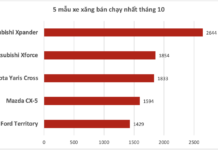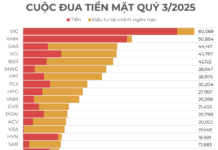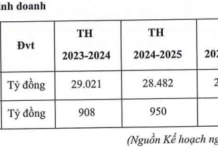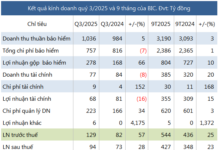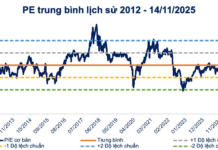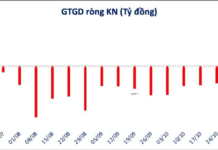The Ministry of Finance is seeking feedback on a draft Circular amending regulations on investment fund operations. Notably, it proposes the introduction of a new type of fund—infrastructure bond funds—designed to expand medium and long-term capital mobilization channels for infrastructure development.
According to the State Securities Commission (SSC), Vietnam is in a critical phase requiring substantial investment in transportation, energy, telecommunications, and urban infrastructure to achieve its goal of becoming a developed, high-income nation by 2045.
Infrastructure bond funds will pool capital from individuals, businesses, and foreign investors, supplementing resources for large-scale projects that public budgets and bank credit cannot fully support.
Diversifying financial products is essential to advancing the fund management industry, enhancing market professionalism, and protecting investors. Currently, fund management companies lack investment products or offer options misaligned with investor risk appetites.
This gap primarily drives individual investors to invest directly rather than through institutions with specialized expertise and risk management capabilities.
The proposed infrastructure bond funds will operate as closed-end funds, preventing early withdrawals. However, fund certificates will be listed and traded on stock exchanges, enabling flexible transfers when needed.
This model ensures stable capital, aligning with the long investment cycles and substantial capital requirements of infrastructure projects.
The draft mandates that at least 65% of a fund’s net asset value (NAV) be invested in infrastructure bonds, government debt instruments, or secure deposits. This balances infrastructure funding goals with portfolio flexibility for fund managers.
Significant Potential for Infrastructure Bonds
VIS Rating estimates Vietnam’s infrastructure investment needs at $245 billion by 2030, with public budgets covering only 70%. Tightened bank credit and limited public funds make capital market mobilization imperative.
In the first ten months of 2025, corporate bond issuances totaled nearly VND 482 trillion ($18 billion), with banks accounting for 69% and real estate/infrastructure at just 23%. This imbalance highlights the lack of stable long-term capital for infrastructure projects.
Infrastructure bond funds are thus seen as a critical missing link in the financial system, channeling social capital into sustainable sectors that directly contribute to economic growth.
Mr. Dương Đức Hiếu, Director and Senior Expert at VIS Rating, noted that from 2025 to 2030, Vietnam requires massive capital for projects like high-speed rail and energy initiatives. Public investment plans cover only 70% of needs.
With bank credit tightening, Mr. Hiếu views infrastructure bond funds as a suitable solution to bridge the capital gap.
Reflecting on Vietnam’s growth since its economic reforms, past infrastructure development relied on state budgets, ODA, and bank credit. However, ODA has diminished, and credit-driven growth has not achieved double-digit GDP targets.
To meet these goals, Mr. Hiếu emphasizes the need for new capital channels, with infrastructure bonds becoming a long-term pillar for development.

Vietnam’s infrastructure investment needs are projected at $245 billion by 2030, with public budgets covering only 70%. Image: AI |
Mr. Hiếu highlights Vietnam’s political and economic stability as strengths for infrastructure bonds, with clear development goals over the next five years.
Infrastructure projects span decades, making stability essential. Additionally, untapped bond investment potential exists among individuals, insurers, and pension funds.
“Infrastructure bonds have immense potential. New policies will activate issuances, meeting demand in the coming years,” Mr. Hiếu predicts.
Oversight Needed to Protect Investors
While supporting the fund proposal, lawyer Lê Thị Nhung of the Hanoi Bar Association cautions against assuming these products are inherently safe.
Ms. Nhung notes that infrastructure bond funds invest in bonds, which carry risks despite their association with infrastructure.
Robust due diligence is critical. Funds must use transparent criteria, independent risk analysis, and comprehensive investor reporting, avoiding reliance on issuer-provided data.
Additional disclosure requirements for infrastructure bonds, including project progress, adjusted investments, risks, and capital usage monitoring, are also necessary.

Introducing infrastructure bond funds aligns with capital market development but requires oversight to protect investors. |
Ms. Nhung suggests mandatory credit ratings for large issuances, a practice in many markets to limit systemic risk.
“Well-structured infrastructure bond funds can establish professional filters. Projects must meet transparency standards, undergo independent reviews, and clearly disclose risks—elements lacking in recent corporate bond markets,” she states.
|
From an individual investor perspective, Mr. Đỗ Ngọc Quỳnh, Vice Chairman of FiinRatings, sees infrastructure bond funds as low-risk fixed-income options suitable for long-term investors. However, closed-end structures reduce liquidity compared to open-ended funds. For infrastructure companies, these funds offer alternative financing to bank credit or private placements, lowering costs and financial risks. Fund managers also benefit from specialized products attracting institutional and foreign capital. Experts believe these funds will professionalize the market and shift economic financing from bank-centric models to capital markets. With hundreds of billions in infrastructure investment needed over the next decade, and private conglomerates like Vingroup and T&T investing in energy and logistics, effective infrastructure bond funds will be vital for Vietnam’s long-term growth. “These funds are innovative, mobilizing private capital for national infrastructure, easing public budgets, and offering safe investment options as Vietnam embarks on large-scale development,” Mr. Quỳnh concludes. |
MINH TRÚC
– 08:32 16/11/2025
Q3 Profits Surge for Shipping Operators Amid Vessel Disposal Boom
The Q3/2025 profit performance reveals a stark divergence among transportation sectors. While the container segment maintained its robust momentum and oil transportation showed signs of improvement, the offshore and bulk shipping sectors continued to face significant challenges, relying heavily on sporadic non-core income to stay afloat.
A Top Global Destination in Northwest Vietnam, Famous Since the 1920s, Set to Launch a $100 Million Eco-Urban Complex
Anticipated to break ground in Q1 2026, the Ô Quý Hồ Tea Hill Eco-Urban Area in Sa Pa ward promises to redefine sustainable living.


